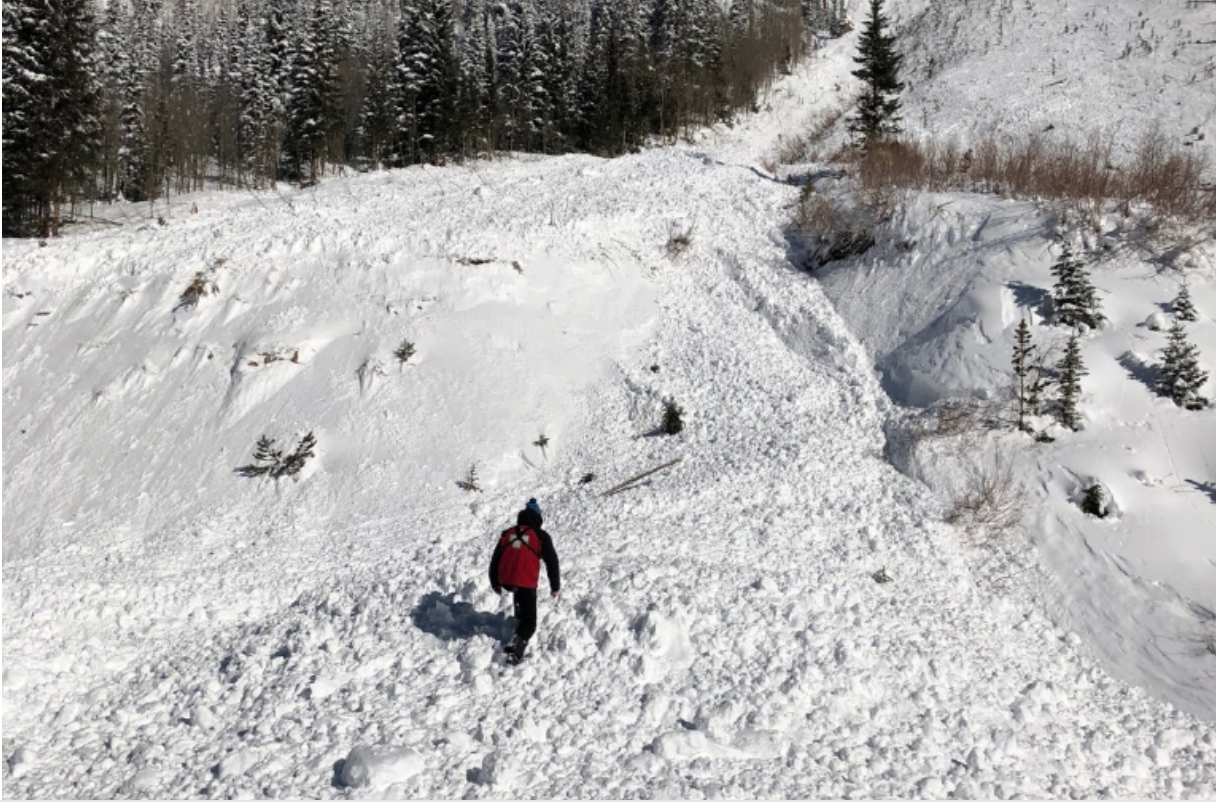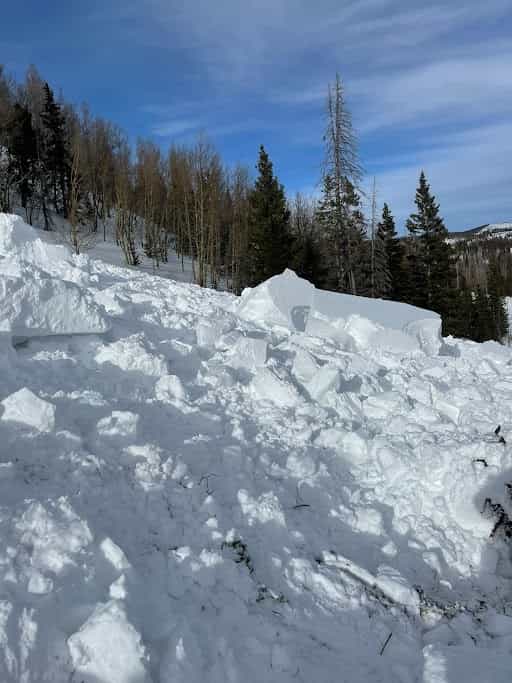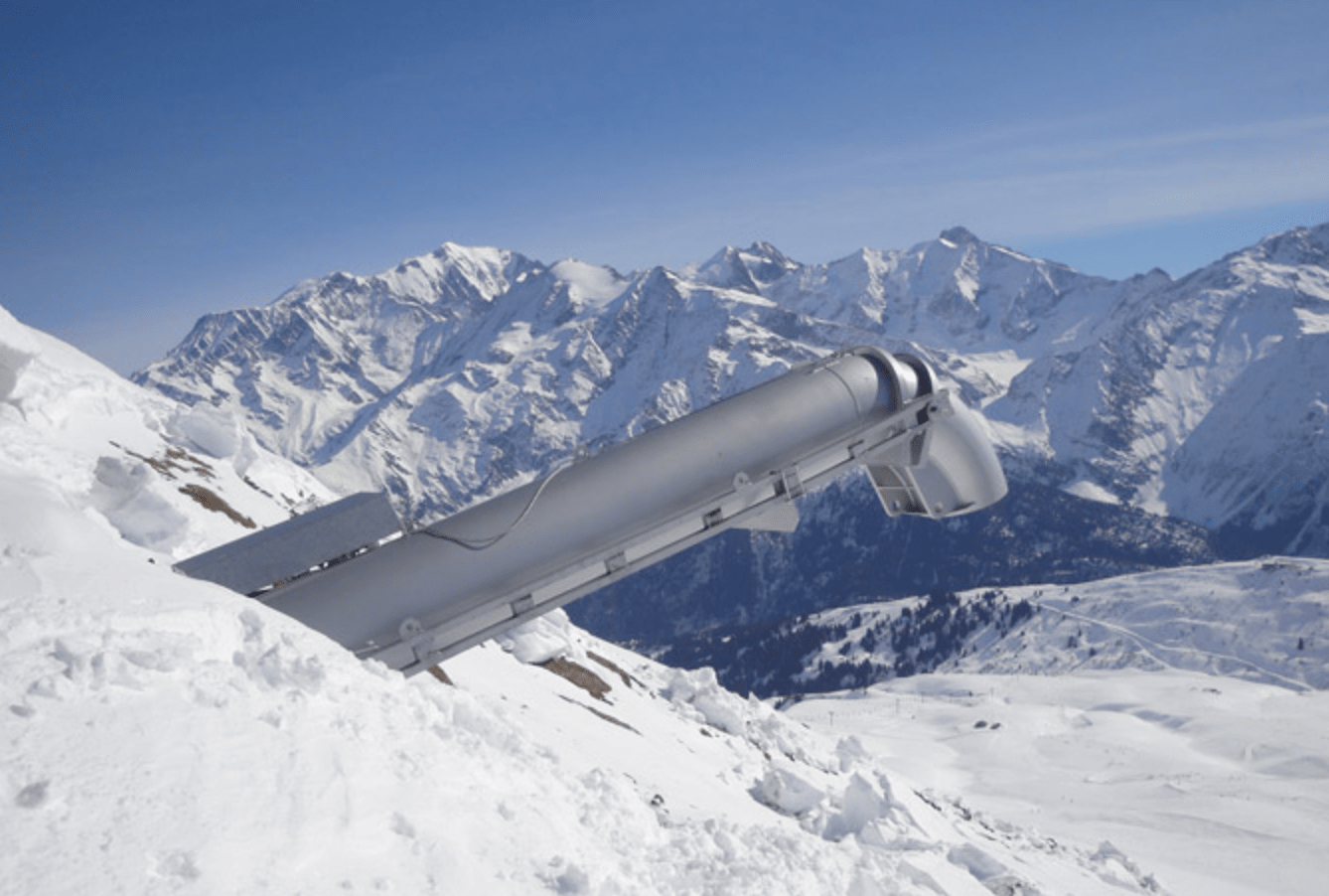
Avalanches are among the most dangerous natural hazards and the science behind their formation and prevention is fascinating. These mass movements of snow often disrupt the operations of ski areas and public roads, leading to significant investments in prevention. Triggered by animals, humans, heavy snowfall, earthquakes, and other natural variables, avalanches have the greatest risk of sliding on slopes greater than 30°, but typically don’t hold enough snow to slide on slopes greater than 45°. In Europe, around 100 people perish in avalanches each year. In the United States, almost 30 people are killed by avalanches annually, and 90% of these fatal avalanches are triggered by the victim or someone in their group. Avalanches can also be triggered remotely when traveling above or below a steep slope, meaning awareness is always required when traveling in the backcountry. The American Institute for Avalanche Research and Education (AIARE) has provided research-based education and training necessary for winter backcountry travel since 1998.
- Related: What’s the Angle? Know Before You Go
Avalanches come in many shapes and sizes but generally occur under the influence of an unstable snowpack. A snowpack is built up after multiple individual storms that often drop different-sized snowflakes in different amounts and temperatures. When snow falls in normal conditions, the snow will stick to itself and create strong layers, but when factors like heat or wind occur, a weak layer can form and fail to adhere to the rest of the snowpack. Research shows that snow that adheres to itself is often rounded in shape, while weak layers are often comprised of “faceted” or “angular” snow that is unable to stick together. When the top layer of the snowpack breaks apart from the rest due to a weak layer in between, dangerous slab avalanches can occur, sending the entire top layer and chunks of snow down the mountain.

Slab avalanches are the most common and dangerous form of avalanches. They are formed in many different ways, but one of the most prevalent is a wind slab. During high wind events, snow is picked up from where it has already fallen and deposited in massive amounts to a specific area where it is carried, creating huge pressure on existing weak layers and typically sliding shortly after formation. Wet slabs can also occur and are a primary concern for spring skiing and early summer lines. These types of slab avalanches occur later in the season when high temperatures create temperature gradients and faceted snow within the snowpack, which causes slabs to break off. A temperature gradient of less than 1° Fahrenheit per 10 cm of snowpack does not produce faceted snow, while greater temperature differences than this can be a sign of an unstable snowpack.
Despite extensive mitigation efforts, one must be aware of avalanche risk even when recreating on maintained terrain like ski resorts and public roads. Although extremely rare, last season saw an unprecedented in-bounds avalanche at Palisades Tahoe, which took the life of one skier and injured others. Fatal in-bounds avalanches have also occurred at Taos in New Mexico and Silver Mountain in Idaho. It is important to learn from these tragedies and understand that while science-based avalanche mitigation is one of ski patrol’s top priorities, there is always a risk when recreating or traveling in avalanche terrain.
Avalanche mitigation is the practice of remotely triggering avalanches before they have the chance to pose a threat to public safety. Ski patrol routinely uses explosive charges and a technique called “ski cutting” to ensure the safety of the slopes before they open to the general public for the day. Explosive charges may be placed by hand, dropped by air, fired by artillery, or ejected from avalanche control systems, which have become increasingly popular, especially for use on roadways and known avalanche chutes.

“The new remote-controlled units make avalanche control efforts safer for CDOT crews and motorists, and reduce the closure impacts significantly,” according to this update from the Colorado Department of Transportation. At least 40 of these devices are operated by the state on some of the ski industry’s busiest roads, such as Loveland and Berthoud Pass off of I-70. Avalanche mitigation is also vital on alpine roads that do not lead to ski areas. The largest mobile avalanche control system in the world is operated by Parks Canada on the trans-Atlantic highway through Glacier National Park. It has 130 recognized chutes crossing the highway corridor and an average annual snowfall of over 300 inches. The Department of National Defense has soldiers stationed on the highway at Rogers Pass to operate 105 mm howitzers year-round under the direction of Parks Canada.
Avalanches pose a serious threat to winter sports enthusiasts, but education and avalanche devices can significantly reduce risk. As mentioned, AIARE courses are necessary for backcountry recreation, as well as an avalanche beacon, shovel, and probe. These three devices are the bare minimum needed to rescue a partner who has been buried in an avalanche. It is vital to locate the victim using your beacon and probe and dig them out with your shovel before they succumb to the effects of asphyxiation. Risk reduction is key, and having the proper avalanche training will enable you to safely recreate on some gnarly terrain while having the knowledge and skills necessary should a slide occur.